The Golden Age of Science Fiction: The 1973 Hugo Award for Best Novella: “The Word for World is Forest,” by Ursula K. Le Guin
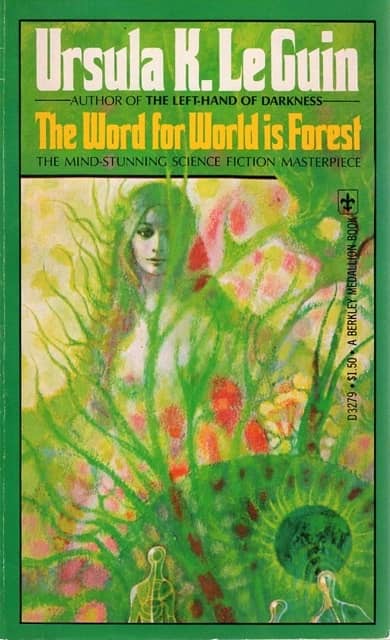 |
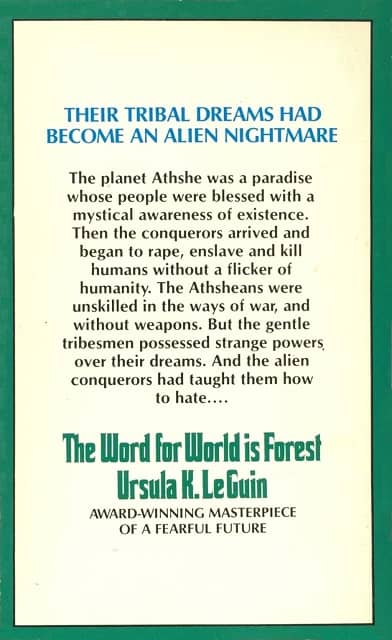 |
The Word for World Is Forest (Berkley Medallion, 1976). Cover by Richard Powers
The great Ursula K. Le Guin won the Hugo Award for Best Novella in 1973, for “The Word for World is Forest,” which first appeared in Harlan Ellison’s anthology Again, Dangerous Visions. The story had been written several years earlier, and there exists a letter from Le Guin expressing her frustration with the time it took Ellison to get the story into print.
“The Word for World is Forest” has been a somewhat polarizing tale in Le Guin’s oeuvre for a long time. The conventional view seems to me, at this remove, that Le Guin missed the mark with this story: its tone is too shrill, the story is too preachy. It’s “Bad Ursula,” in a common formulation. And that’s been my position for a long time.
Let’s begin with the obvious: I’ve already discussed the 1972 novellas, in my post about Arthur C. Clarke’s Nebula winner, “A Meeting With Medusa.” Here’s what I wrote:
So, did it deserve its Nebula? Well, in many years it would have. But not this year. Because this year there were two magnificent Frederik Pohl novellas: “The Gold at the Starbow’s End” and “The Merchants of Venus,” perhaps his two best stories ever. Add Joe Haldeman’s “Hero,” the first of the stories that became The Forever War. And even then, we haven’t come to the clear-cut best novella of 1972, one of the very greatest SF novellas of all time: “The Fifth Head of Cerberus,” by the late, incomparable, Gene Wolfe.
Does “The Word for World is Forest” stand with “The Fifth Head of Cerberus”? Ummm – no, not even close. I think it’s fair to say that the 1973 awards, both Nebula and Hugo, missed the boat completely. But, eh, that’s happened before. Perhaps not so often so clearly, but there are relatively few SF stories as great as “The Fifth Head of Cerberus.”
The fairer question is, does “The Word for World is Forest” stand up on its own terms?
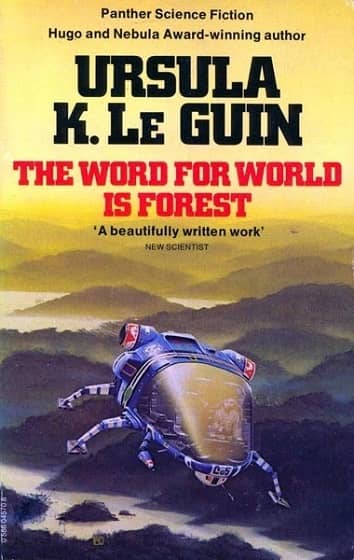 |
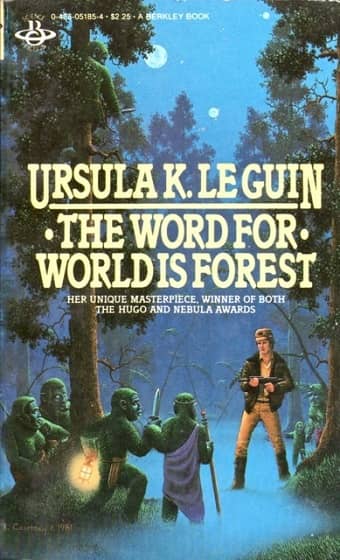 |
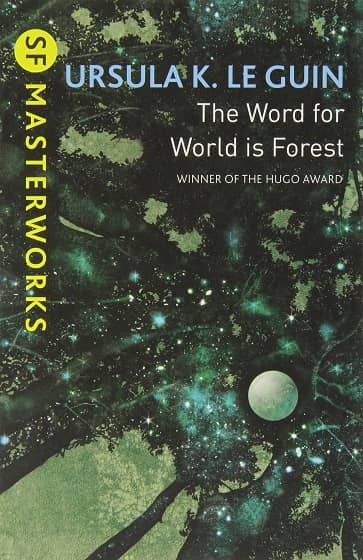 |
Covers by Peter Elson (Panther, 1980), Richard Courtney (Berkley, 1981), Christopher Gibbs (SF Masterworks, 2015)
That’s a split decision, in my mind, on this latest rereading. The opening is unpromising. We’re on another world, the New Tahiti Colony, and Colonel Davidson is thinking about the recent arrival of a new batch of “breeding females”; as well as about the news that attempts to grow Earth crops on “Dump Island” are a failure. We gather (over time) that humans are attempting to colonize “New Tahiti,” but also that they are aggressively logging the world, and that they send the wood back to a ruined Earth. I was bothered by the economic implausibility of that last bit, and by the social implausibility (in a future context) of the “batch of breeding females.” This is caricature.
The other main point of view character is one of the world’s natives, called “creechies” by many of the humans. They are fully intelligent (indeed, as we would know anyway from the background to Le Guin’s Hainish stories, they are closely related to humans, and to the many other intelligent species in the “League of Worlds,” or “Ekumen.”) However, due to their small stature, and their low technology lifestyle deep in the forests of their world, they have been classified as animals, which makes the world open to colonization. (It’s possible this classification was originally an honest mistake, but it’s clear that knowledge of the natives’ true intelligent status is now being purposely suppressed by the humans.)
The natives have been enslaved by the humans for logging labor. One of them, Selver, had attacked Davidson after Davidson raped and killed Selver’s wife. Davidson nearly killed Selver, but the one somewhat sympathetic human, Captain Lyubov, intervened. Lyubov has learned the native language (from Selver). But Selver is determined to drive humans from the world.
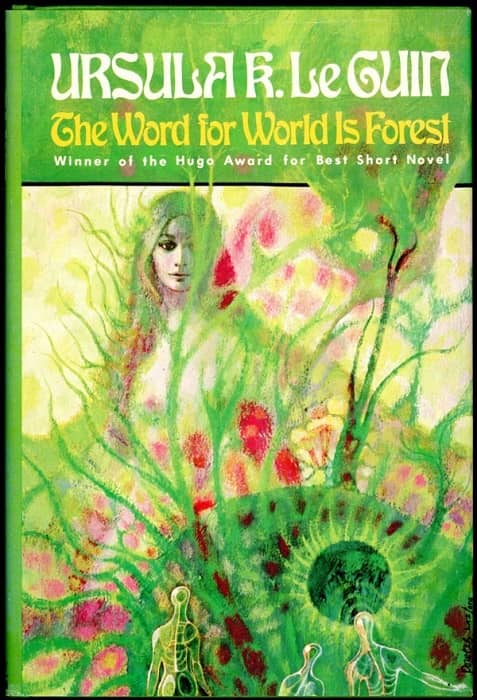 |
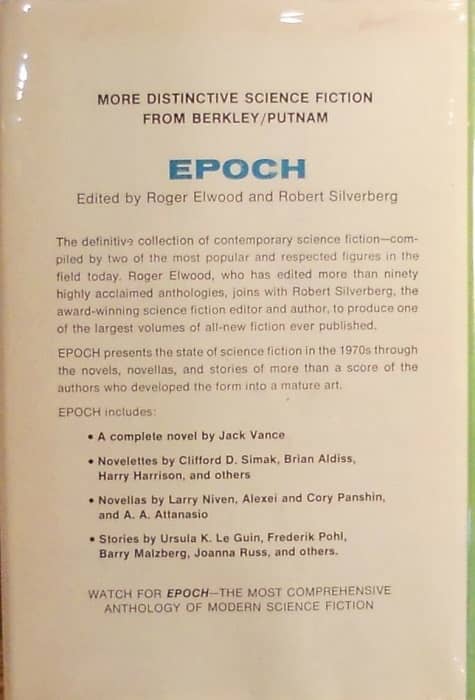 |
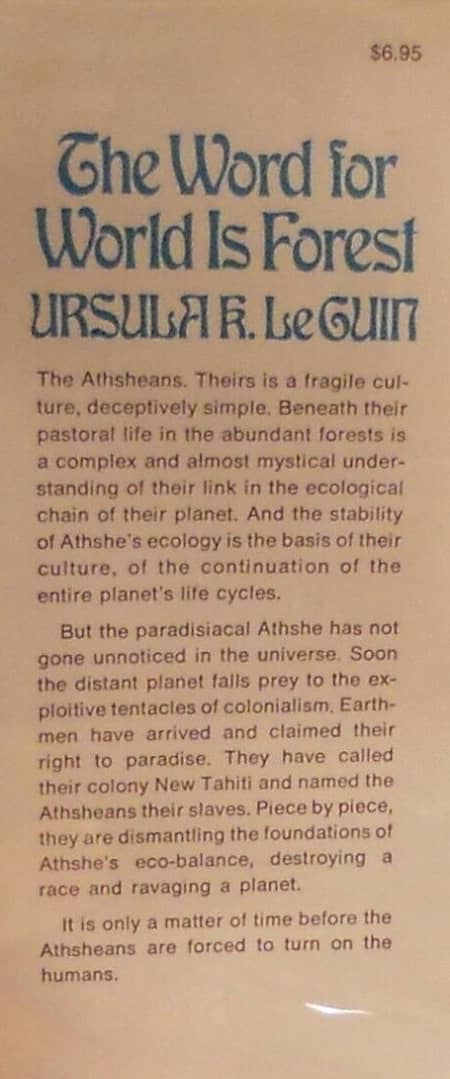 |
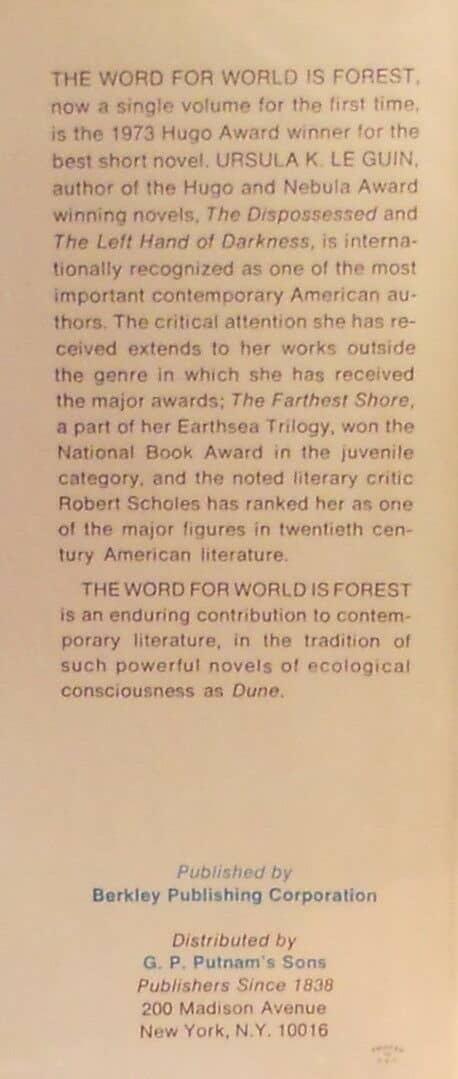 |
Covers and inside flap text for the Berkley/Putnam hardcover first edition (1976)
The main action is precipitated by the arrival of a League ship. They quickly discover the intelligence of the natives, and they negotiate an agreement for the humans to free all the slaves, and to cease logging except in a narrow area already essentially ruined for native life. But Davidson defies his orders, and murders some natives, and in retaliation Selver leads an attack on a human encampment. By this time the League ship is gone, and the remaining humans end up repudiating their agreement (on the grounds that Selver’s raid violated the previous truce). Selver becomes regarded as a god (a term with a somewhat different meaning in the native culture), and he leads a further movement to force humans from his world.
The ending is inevitable, and in some ways anticlimactic. I have, however, failed to mention perhaps the best part of the story – the description of the natives’ matriarchal culture, their peaceful ways, their “dreaming.” And, by the end, there is some power in the realization that even with humans gone, Selver’s actions have permanently changed their culture, and likely not in a good way.
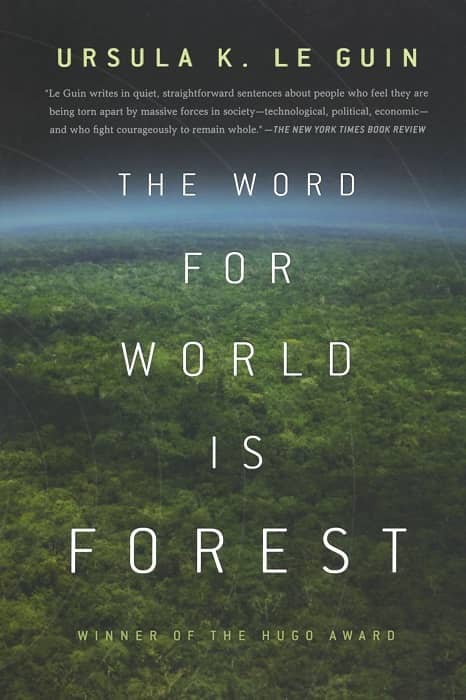 |
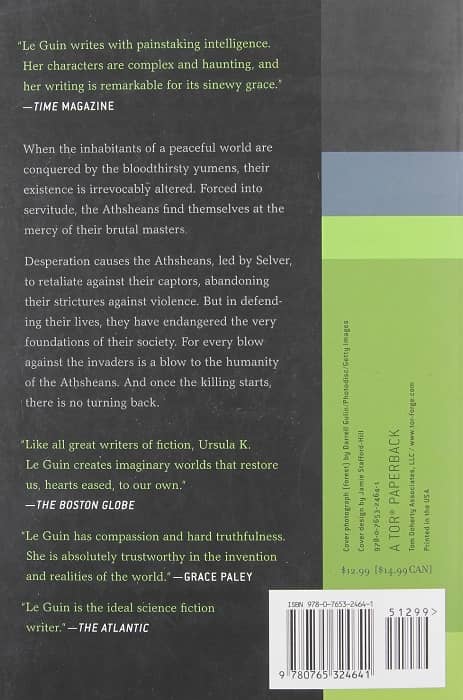 |
Cover by Darrell Gulin (Tor, 2010)
It’s Le Guin, so it’s eminently readable, with some powerful passages and some interesting ideas. But the depiction of Colonel Davidson, and indeed most of the humans, is simply too cartoonish to convince. This would have been a far more powerful story with less grotesque humans, still acting in bad faith, and willful ignorance, and ending up in the same place.
Famously Le Guin intended this as a commentary on US involvement in Vietnam. I think its message here is at once too obvious, and marred by the preachiness and exaggerations of the narrative and characterization. It is also reputedly (and quite plausibly) an influence on James Cameron’s film Avatar.
The story is a very long novella, about 38,000 words by my count. As such it can be classified with several other “short novels” by Le Guin, including her first two “novels,” Rocannon’s World, and Planet of Exile; and, later, The Eye of the Heron. And, indeed, eventually The World for World is Forest was published as a standalone book, in 1976.
Rich Horton’s last article for us was on the winner of the 1973 Forry Award: C. L. Moore. His website is Strange at Ecbatan. See all of Rich’s Black Gate articles here.
Great article, Rich. I agree with much of your perspective. I like LeGuin’s novel a lot, and think that while she griped about how long it took Ellison to get it published, perhaps she rushed through it in order to meet a deadline. That’s what it feels like to me. I think and i wish she would have revised and rewritten the story, expanded it into a full-blown story. Having just reread her The Left Hand of Darkness, I’m going to revisit this one for the third or fourth time. And the first thing I thought of when I saw Avatar was LeGuin, as well as Anne McCaffrey and several other ideas – such as Roger Dean’s art work (floating “islands”), and even Robo-Jox.
Joe (and Rich),
Are we sure Le Guin DIDN’T revise it later? I know of a handful of her more famous stories (such as “Vaster Than Empires, and more Slow,”) which exist in multiple versions because she was always tinkering with them.
That’s quite possible, John. I never bought the paperback version. All I’ve ever read was the version in Dangerous Visions, which I still have.